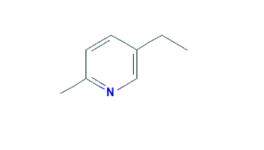What is Triethylene glycol dimethacrylate?
Dec 30,2019
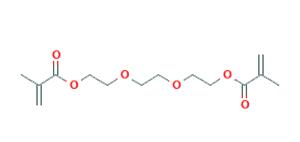
Triethylene glycol dimethacrylate (TEGDMA) is a diester formed by condensation of two equivalents of methacrylic acid and one equivalent of ethylene glycol.
Dental composite resins, which are biomaterials that are used to replace biological tissues in both appearance and function, consist of inorganic filler particles and an organic matrix of acrylate/methacrylate polymers. The organic component may contain any of several different acrylate/methacrylate monomers, although one of the most commonly used monomer is triethylene glycol dimethacrylate (TEGDMA). TEGDMA improves the bonding strength and viscosity of the resin composite. After curing, the composite material contains unreacted monomers, which may be released into the oral cavity and/or diffuse through the dentin into the pulp. Previous studies have shown that the concentration of TEGDMA that reaches the pulp could be about 4 mmol/L. The leakage of the monomers is time-dependent, and about 90% of the unreacted monomers are released in the first 24 h post-polymerization. The monomers may come in contact with leukocytes that are present in the pulp and oral cavity. The population of white blood cells found in the dental pulp consists of CD4+ and CD8+ T lymphocytes, as well as dendritic cells (DCs), neutrophils and macrophages. Gingival crevicular fluid (GCF) flows into the gingival crevice through the junctional epithelium thereby transporting cells into the oral cavity. The population of cells in the GCF comprises 95–97% neutrophils, 2–3% monocytes 1–2% and lymphocytes, with fewer T cells than B lymphocytes. Since many different cells are present in the oral cavity, pulp and epithelium, a variety of cells may encounter free monomers. It is therefore important to study the different effects that the monomers may have on the cells [1].
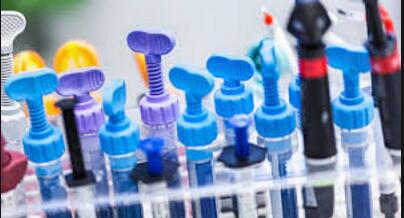
Previous studies have suggested that co-exposure with TEGDMA and lipopolysaccharide (LPS) attenuates LPS-induced cytokine responses in the mouse macrophage cell line RAW264.7. In contrast, another study has reported that TEGDMA exposure leads to increased levels of IL-8 mRNA, while the IL-6 and IL-10 mRNA levels were reduced in human dental pulp cells. TEGDMA does also induce production of MCP-1 and IL-1b in vitro in exposed human gingival cells, pulp fibroblasts and in an oral mucosa model [2].
Triethylene glycol dimethacrylate (TEGDMA) is a resin monomer widely used in the composition of dentin bonding agents and composite resins to restore teeth structures impaired by caries and/or fractures. However, resin monomers can be released into the oral environment and can trigger hazardous biological effects on oral tissues. The release of the resin monomers due to degradation and incomplete polymerization can occur hours or days after the treatment. Due to its hydrophilic nature, hydrolysis plays an important role in the degradation processe of TEGDMA. Chemical interactions with oral fluids and mechanical influences may also cause the degradation of resin monomers. Direct contact or diffusion of resin monomers through the dentinal tubules creates ways of interaction between dental pulp tissue and resin monomers. Dentin thickness and the severity of caries lesions are important factors in determining the amount of resin monomers interacting with dental pulp tissue. TEGDMA has been reported to cause cytotoxicity, impaired cellular functions, pulpal inflammatory responses, and changes in the immune system. In addition, TEGDMA may reduce the mineralization capacity of dental pulp cells by decreasing the expression of the mineralization related genes pathways and causing adverse effects.
Periodontal ligament fibroblasts are known to contribute to osteoclast formation and promote destructive inflammatory periodontal diseases. Interactions with bacteria or mechanical loading play a key role during this process. Moreover, Uchiyama, et al. (2009) has shown that dental pulp and periodontal ligament cells support the differentiation and function of osteoclasts [3]. Recently, Inamitsu, et al. (2017) reported that 2-hydroxyethyl methacrylate (HEMA) and TEGDMA inhibited the osteoclast differentiation through different signaling pathways in bone marrow-derived macrophages (BMMs) and murine monocytic cell line RAW-D [4]. The role of periodontal ligament and pulp cells on osteoclastogenesis and the effects of different resin monomers on osteoclast formation have been shown in various studies. However, there are no studies so far on the odontoclastogenic activity of pulp cells in the presence of TEGDMA. The null hypothesis is that TEGDMA promotes the odontoclastic differentiation ability of human dental pulp cells. Therefore, Zeynep ÖNCEL TORUN et al. carried out to determine if TEGDMA promotes the odontoclastic differentiation ability of human dental pulp cells (hDPCs). Thus, they evaluated the effects of TEGDMA on the ability of hDPCs to produce odontoclasts in the presence of CD14+ odontoclastic precursor cells derived from human peripheral blood [5].
References
[1] Sara Alizadehgharib, Anna-Karin Östberg & Ulf Dahlgren, Triethylene glycol dimethacrylate: adjuvant properties and effect on cytokine production, ACTA BIOMATERIALIA ODONTOLOGICA SCANDINAVICA, 2018, VOL. 4, NO. 1, 1–9
[2] Moharamzadeh K, Brook IM, Scutt AM, et al. Mucotoxicity of dental composite resins on a tissueengineered human oral mucosal model. J Dent. 2008;36:331–336.
[3] Uchiyama M, Nakamichi Y, Nakamura M, Kinugawa S, Yamada H, Udagawa N, et al. Dental pulp and periodontal ligament cells support osteoclastic differentiation. J Dent Res. 2009; 88:609-14.
[4] Inamitsu H, Okamoto K, Sakai E, Nishishita K, Murata H, Tsukuba T. The dental resin monomers HEMA and TEGDMA have inhibitory effects on osteoclast differentiation with low cytotoxicity. J Appl Toxicol. 2017; 37:817-24.
[5] Zeynep ÖNCEL TORUN, … Ferit AVCU, Effects of triethylene glycol dimethacrylate (TEGDMA) on the odontoclastic differentiation ability of human dental pulp cells, J Appl Oral Sci., 2017;25(6):631-40.
- Related articles
- Related Qustion
- Triethylene Glycol Dimethacrylate: Properties and Induction of Apoptotic Proteins in Pulp Fibroblasts Feb 22, 2024
Triethylene glycol dimethacrylate in composites causes apoptotic cell death in fibroblasts, impacting pulp tissue. Control and prevention strategies are crucial in dental applications.
- Triethylene glycol dimethacrylate: activities and applications Nov 13, 2023
Despite its cytotoxic effects, Triethylene glycol dimethacrylate is vital for creating antibacterial dental composites with desirable properties.
5-Ethyl-2-methylpyridine is found in alcoholic beverages. 5-Ethyl-2-methylpyridine is present in dry red beans, cocoa, tea and whisky. 5-Ethyl-2-methylpyridine is a flavouring agent.....
Dec 30,2019Flavors and fragrancesTetracaine hydrochloride is a local anesthetic used to numb the eyes, nose, or throat. It may also be used before starting an intravenous to decrease pain from the procedure. Typically it is applied as a liquid to the area.....
Dec 30,2019AnestheticsTriethylene glycol dimethacrylate
109-16-0You may like
Triethylene glycol dimethacrylate manufacturers
- Triethylene glycol dimethacrylate
-
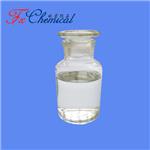
- $0.00 / 25KG
- 2025-12-13
- CAS:109-16-0
- Min. Order: 25KG
- Purity: 98%min
- Supply Ability: 30tons/month
- Triethylene glycol dimethacrylate
-

- $1.00 / 1KG
- 2025-12-11
- CAS:109-16-0
- Min. Order: 1KG
- Purity: 99%
- Supply Ability: 10 mt
- Triethylene glycol dimethacrylate
-
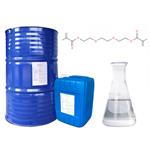
- $0.00 / 200kg
- 2025-11-19
- CAS:109-16-0
- Min. Order: 20kg
- Purity: 97.0%
- Supply Ability: 10 tons




